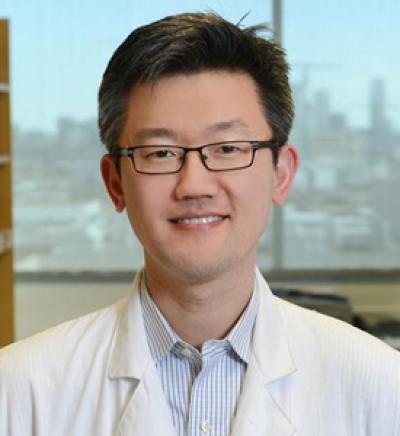CRI scientists pinpoint gene likely to promote childhood cancers

This is Dr. Hao Zhu. Credit: UT Southwestern
“We and others have found that Lin28b – a gene that is normally turned on in fetal but not adult tissues – is expressed in several childhood cancers, including neuroblastoma, Wilms’ tumor and hepatoblastoma, a type of cancer that accounts for nearly 80 percent of all liver tumors in children,” said Dr. Hao Zhu, a principal investigator at CRI, and Assistant Professor of Pediatrics and Internal Medicine at UT Southwestern Medical Center.
“In our study, we found that overproduction of Lin28b specifically causes hepatoblastoma, while blocking Lin28b impairs the cancer’s growth. This opens up the possibility that pediatric liver cancer patients could one day be treated without resorting to chemotherapy.”
Lin28b is an attractive therapeutic target in cancer because it is ordinarily only expressed in embryos, so blocking it in children should specifically hinder cancer growth without introducing many side effects.
Each year in the United States, 700 children are newly diagnosed with neuroblastoma, 500 with Wilms’ tumor and 100 with hepatoblastoma. At Children’s Medical Center in Dallas, more than 100 children have been treated for those three types of cancers over the last two years.
Previous studies found that Lin28b is a critical factor in stem cell and fetal tissue development, leading Dr. Zhu and his team to hypothesize that the same gene would play a significant role in the development of certain cancers.
“We looked at Lin28b in a multitude of ways in mice to study its effects on cancer, from increasing it significantly to deleting it,” said Dr. Zhu, co-senior author of the paper. “From this and earlier studies, it appears that Lin28b activates the metabolic pathways that provide the building blocks of growth for certain cancers.”
The next step for the Zhu lab is to establish whether genes related to Lin28b have similar effects on the development of cancer, and to determine if those genes might be more effective targets for potential therapies.
Dr. George Daley, Professor of Hematology at Children’s Hospital Boston, is co-senior author of the paper. The work in the Zhu lab was supported by the National Institutes of Health, the Burroughs Wellcome Fund, the Cancer Prevention and Research Institute of Texas and donors to the Children’s Medical Center Foundation.
About CRI
Children’s Medical Center Research Institute at UT Southwestern (CRI) is a joint venture established in 2011 to build upon the comprehensive clinical expertise of Children’s Medical Center of Dallas and the internationally recognized scientific excellence of UT Southwestern Medical Center. CRI’s mission is to perform transformative biomedical research to better understand the biological basis of disease, seeking breakthroughs that can change scientific fields and yield new strategies for treating disease. Located in Dallas, Texas, CRI is creating interdisciplinary groups of exceptional scientists and physicians to pursue research at the interface of regenerative medicine, cancer biology and metabolism, fields that hold uncommon potential for advancing science and medicine. More information about CRI is available on its website: cri.utsw.edu
Media Contact
All latest news from the category: Life Sciences and Chemistry
Articles and reports from the Life Sciences and chemistry area deal with applied and basic research into modern biology, chemistry and human medicine.
Valuable information can be found on a range of life sciences fields including bacteriology, biochemistry, bionics, bioinformatics, biophysics, biotechnology, genetics, geobotany, human biology, marine biology, microbiology, molecular biology, cellular biology, zoology, bioinorganic chemistry, microchemistry and environmental chemistry.
Newest articles

Sea slugs inspire highly stretchable biomedical sensor
USC Viterbi School of Engineering researcher Hangbo Zhao presents findings on highly stretchable and customizable microneedles for application in fields including neuroscience, tissue engineering, and wearable bioelectronics. The revolution in…

Twisting and binding matter waves with photons in a cavity
Precisely measuring the energy states of individual atoms has been a historical challenge for physicists due to atomic recoil. When an atom interacts with a photon, the atom “recoils” in…

Nanotubes, nanoparticles, and antibodies detect tiny amounts of fentanyl
New sensor is six orders of magnitude more sensitive than the next best thing. A research team at Pitt led by Alexander Star, a chemistry professor in the Kenneth P. Dietrich…





















